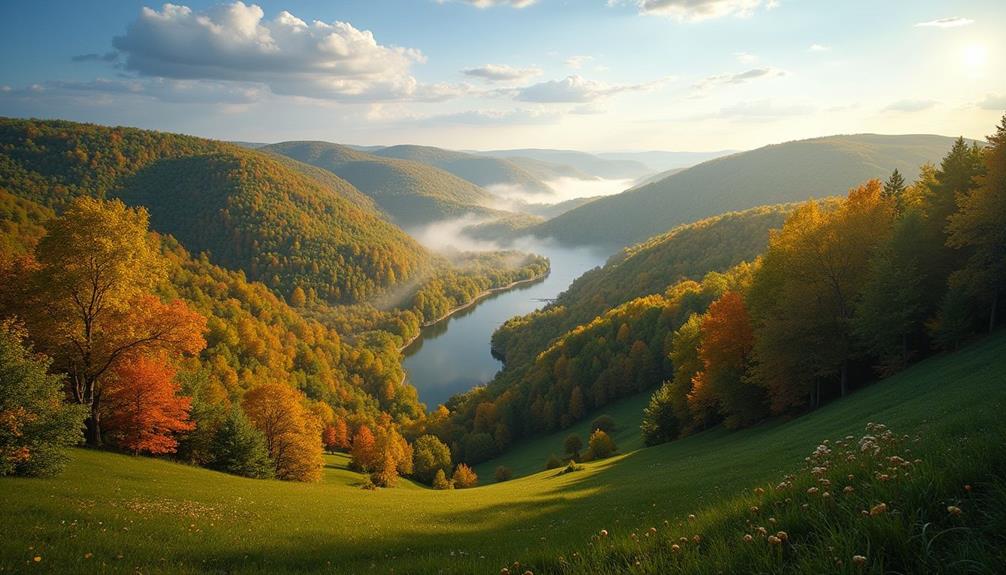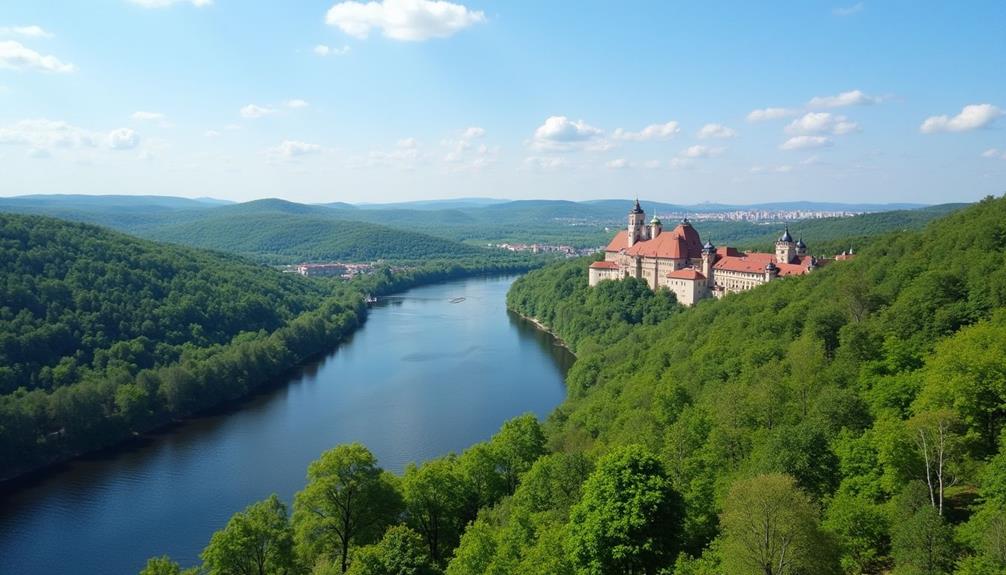The Nizhny Novgorod Region, a cornerstone of Russian heritage, offers a compelling blend of historical depth and modern dynamism. Established in 1221, it sits at the strategic juncture of the Volga and Oka rivers, serving as a focal point for both cultural and economic activities. Renowned for its architectural marvels such as the 16th-century Kremlin and Alexander Nevsky Cathedral, the region also excels in industries like automotive manufacturing and shipbuilding. Its scenic landscapes and vibrant festivals, including the International Jazz Festival, further underscore its multifaceted appeal. What truly sets this region apart?
Interesting Facts about Nizhny Novgorod

Often regarded as a jewel of Russian heritage, Nizhny Novgorod boasts a rich tapestry of historical and cultural importance. The city’s unique blend of local cuisine, featuring traditional Russian dishes with a modern twist, reflects its diverse cultural influences.
Renowned for its architectural styles, Nizhny Novgorod showcases a harmonious mix of medieval structures, Baroque edifices, and contemporary designs, providing a visual narrative of its dynamic past and present.
Cultural festivals play a pivotal role in the city’s vibrant atmosphere, with events such as the Nizhny Novgorod Fair and the International Jazz Festival drawing visitors from around the globe. These festivals not only celebrate local traditions but also foster a spirit of creativity and international collaboration.
As a major transportation hub, Nizhny Novgorod is well-connected by rail, road, and air, facilitating seamless travel and commerce. The city’s robust infrastructure supports both business and tourism, making it an accessible destination for global travelers.
Educational institutions in Nizhny Novgorod, including prestigious universities and research centers, contribute considerably to its intellectual and cultural landscape.
These institutions are instrumental in advancing knowledge and fostering innovation, underpinning the city’s reputation as a center of learning and progress.
Nizhny Novgorod’s History and Culture
Steeped in a profound sense of historical gravitas, Nizhny Novgorod’s origins date back to its founding in 1221 by Prince Yuri II of Vladimir. This ancient city, strategically positioned at the confluence of the Volga and Oka rivers, has served as a critical nexus for trade and defense throughout Russian history.
Its historical landmarks, such as the Kremlin, a fortress dating from the 16th century, and the grand Alexander Nevsky Cathedral, bear testimony to its storied past.
Culturally, Nizhny Novgorod is a vibrant tapestry woven from various traditions. The city’s cultural festivals, including the renowned Nizhny Novgorod Fair, have attracted traders and artists from across the globe, celebrating diverse forms of artistic and commercial exchange.
Local cuisine, rich with flavors of traditional Russian fare, offers culinary delights such as “borscht” and “pirozhki.
The legacy of traditional crafts, particularly the world-famous Khokhloma painting, continues to thrive, showcasing the region’s dedication to preserving its artisanal heritage.
Influential figures such as Maxim Gorky have further cemented Nizhny Novgorod’s cultural significance, contributing to its identity as a beacon of Russian history and culture.
Natural Beauty of Nizhny Novgorod

Nestled within the heart of Russia, Nizhny Novgorod’s natural beauty is a compelling blend of verdant landscapes and majestic waterways. The region’s scenic landscapes are characterized by the vast, rolling hills and dense forests that provide a lush backdrop for myriad outdoor activities.
These green expanses are punctuated by the meandering Volga and Oka rivers, whose river views offer a serene contrast to the vibrant, bustling city life.
The region boasts a remarkable wildlife diversity, with numerous species of flora and fauna thriving in its varied ecosystems. From the elusive lynx to the soaring eagles, nature enthusiasts can revel in the rich biodiversity that calls Nizhny Novgorod home.
Hiking trails traverse through these natural habitats, allowing visitors to immerse themselves in the tranquility and splendor of the area.
Nizhny Novgorod’s seasonal beauty offers a dynamic experience year-round. Spring and summer bring blooming wildflowers and lush greenery, while autumn paints the forests in a tapestry of reds and golds.
Winter transforms the landscape into a pristine, snowy wonderland, perfect for those seeking solitude and adventure in equal measure. This ever-changing tableau underscores the region’s enduring allure for both residents and travelers alike.
Nizhny Novgorod’s Economy
As a pivotal economic hub in Russia, Nizhny Novgorod boasts a diverse and robust economy that considerably contributes to the nation’s industrial and commercial landscape. The region’s industrial development has been historically significant, with a strong presence in sectors such as automotive manufacturing, shipbuilding, and machinery. Local industries play an essential role in sustaining the economic momentum, with key enterprises like GAZ Group and Krasnoye Sormovo Shipyard leading the way.
Despite its strengths, Nizhny Novgorod faces economic challenges that require strategic attention. Issues such as labor market fluctuations and the need for technological modernization pose potential obstacles to sustained growth. Addressing these challenges is critical for maintaining economic stability and fostering resilience in the face of global economic shifts.
Trade partnerships are fundamental for the region, with Nizhny Novgorod actively engaging in both domestic and international trade. The region’s strategic location along the Volga River enhances its trading capabilities, facilitating the exchange of goods and services.
In addition, investment opportunities abound, particularly in sectors like information technology, renewable energy, and logistics. By capitalizing on these opportunities, Nizhny Novgorod can continue to thrive as a dynamic economic center in Russia.
Geographic Traits of Nizhny Novgorod

Understanding the economic landscape of Nizhny Novgorod requires an appreciation of its geographic traits, which greatly influence the region’s industrial and commercial activities.
The region’s landforms diversity, ranging from the rolling hills of the Volga Upland to the flat expanses of the Oka-Don Plain, contributes to varying land use practices. This diversity supports agricultural activities in the plains while the uplands host mineral extraction industries.
Climate variations, with cold winters and warm summers, also play a pivotal role. The continental climate impacts agricultural cycles and energy consumption patterns, necessitating robust heating infrastructure during winter months.
The river systems, particularly the Volga and Oka rivers, are central to the region’s urban geography and transportation networks. These waterways have historically facilitated trade and movement, sustaining the development of Nizhny Novgorod as a critical commercial hub.
Modern transportation networks, including extensive rail and road systems, further enhance connectivity within the region and to other parts of Russia.
Urban geography in Nizhny Novgorod is marked by a blend of historic architecture and modern industrial zones. This duality supports a thriving tourism sector while also accommodating significant industrial activities, underscoring the region’s multifaceted economic landscape.




